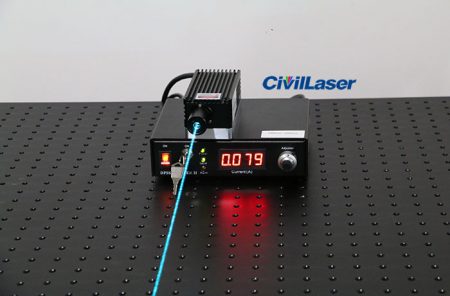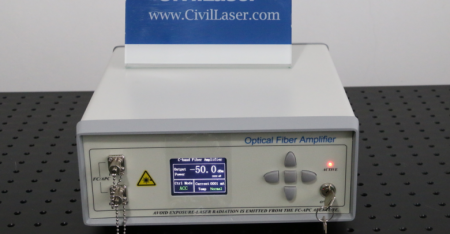Nonlinear polarization rotation is the most common equivalent saturable absorber in fiber lasers. This technique exploits the nonlinear refractive index and birefringence effects in the fiber, allowing different parts of the pulse to accumulate differently in the laser cavity. The phase shifts, thus evolving into different polarization states, and then polarization selection by the analyzer, introducing periodic modulation, and corresponding to the narrowing effect of the pulse in the time domain, equivalent to the action of the saturable absorber.
At present, there are many reports on mode-locked Raman fiber lasers based on nonlinear polarization rotation. In 2015, Kuang et al. successfully obtained ultra-fast Raman fiber lasers based on nonlinear polarization rotary mode-locking. The lasers were multi-mode continuous lasers. The pumping source has a device structure as shown in Fig. 2(a), in which WDM is a wavelength division multiplexer, EDF is an erbium doped fiber, EDFA is an erbium doped fiber amplifier, CW is a continuous wave, and HNLF is a highly nonlinear fiber. The PC is a polarization controller and the PDI is a polarization dependent isolator. The two polarization controllers and the polarization-stopper polarization-maintaining isolators are typical structures of nonlinear polarization rotary mode-locking. The gain fiber is a 500m long high-linearity fiber, and the ultra-fast Raman laser has a center wavelength of 1651.3nm. The pulse width is 890 ps and the pulse repetition frequency is 378.35 kHz. The time domain envelope and pulse sequence of the output pulse are shown in Figures 2(b) and 2(c), respectively.
In the same year, Liu et al. reported a mode-locked Raman fiber laser that can achieve picosecond ultrashort pulse and nanosecond short pulse output. The same nonlinear polarization rotation mechanism is used. The device structure is shown in Fig. 3(a), where RFL For Raman fiber lasers, OC is the output coupler and PD-ISO is the polarization dependent isolator. The gain fiber used is a high-linear optical fiber of 710 m length. By adjusting the different states of the polarization controller, the laser can operate in the state of picosecond ultrashort pulse and nanosecond short pulse output with pulse widths of 180ps and 500ns, respectively. The pulse sequence and time domain envelope in the two states are shown in the figure. 3(b) and 3(c). Figures 3(d) and 3(e) show the spectrum and spectrum in two states. The repetition frequency of the output pulse is 275kHz and the spectral signal-to-noise ratio is 65dB.


